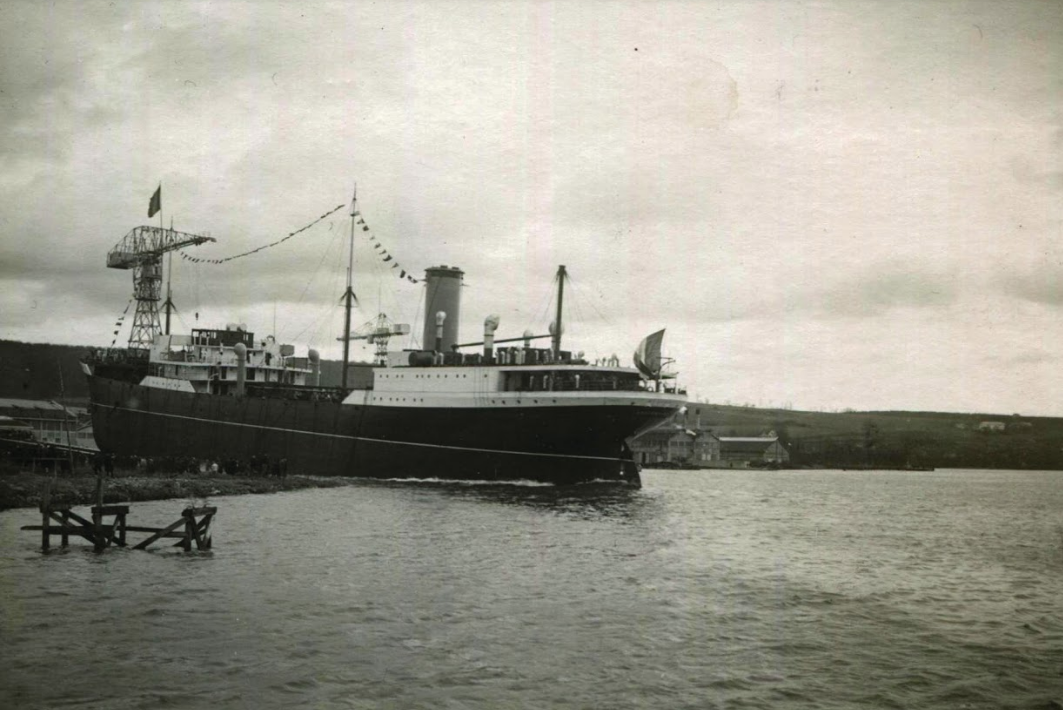Megara

The build
Built in France at the Ateliers et Chantiers de la Seine yard at Le Trait, Megara’s first owners were the Dutch operators NV Petroleum Maats La Corona, a subsidiary of Royal Dutch Shell.
The twin-screw ship was 128.2m (412ft) long and the original tonnage was 10,920dwt or 7,931gt. Propulsion was by two six-cylinder Werkspoor pressure-charged engines, giving the vessel a service speed of 13 knots.
Megara had been built to carry crude and white oil products, but in 1931 Royal Dutch Shell took delivery of Agnita, built at the UK yard of Hawthorn, Leslie & Company, as the first ship purpose-designed to carry LPG – and, more specifically, sulphuric acid, butane and propane.
Deployments
Agnita’s success in running these products between Amsterdam, Curaçao, Houston, and Rouen was so good that Shell decided to deploy a larger vessel on the service and chose to convert Megara for the job.
The conversion, which was undertaken by the Werkspoor yard in the Netherlands, involved the fitting of four riveted cylindrical pressure vessels in each of the ship’s six centre tanks. Twenty of the resulting pressure vessels were used to carry butane, while four were used for propane. This gave the ship capacity to carry some 1,300 cu m of butane and 158 cu m of propane.
When carrying gas, Megara’s butane tanks were filled to 95% of the cylinder’s capacity and the propane tanks were filled to 91% – equating to a maximum of 780 tonnes of LPG cargo. The tanks had been built by Werkspoor to a Hawthorn, Leslie design pioneered in the construction of Agnita.
Megara Fact File
Where was Megara built?
France, at the Ateliers et Chantiers de la Seine yard at Le Trait
How big was the Megara?
The twin-screw ship was 128.2m (412ft) long and the original tonnage was 10,920dwt or 7,931gt
What was Megara’s purpose?
Originally constructed as an oil tanker in 1929, the Dutch ship Megara went on to become one of the first specialist liquefied petroleum gas (LPG) carriers only five years later
What was the true purpose of the Megara?
Lloyd’s Register had been asked to omit any reference in its register book to the ships having been specially constructed for the carriage of sulphuric acid
What year did the Megara stop operating?
The ship continued carrying propane throughout the war, and early in the 1950s, until being sold for scrap in 1958
Ownership
It was later revealed that Lloyd’s Register had been asked to omit any reference in its register book to the ships having been specially constructed for the carriage of sulphuric acid and high-pressure petroleum products.
The owners told the classification society they had ‘spent a great deal of money in constructing these vessels for a special trade and it is essential in their interests not to advertise their special features’. Consequently, their notations read: 100A1 Carrying Petroleum in Bulk and Fitted with Cylindrical Tanks.
In October 1937, Megara was damaged when a butane cargo exploded during a voyage between France and Southampton. And in December 1939, Agnita – then operated by Shell’s British subsidiary, Anglo-Saxon Petroleum – became the company’s first tanker to be attacked by air, while off the UK south coast en route for Rotterdam to load sulphuric acid. The ship was repaired in Southampton, but was sunk by the Germans in 1941.
Megara, which had flown the Dutch flag since coming into service in 1929, was switched to the Anglo-Saxon Petroleum Company in 1939 and put under the British flag. The ship continued carrying propane throughout the war, and early in the 1950s, ownership was switched to the Shell Company of Gibraltar, with the vessel serving as a depot ship in the harbour until being sold for scrap in 1958. Megara was broken up in the Spanish port of Malaga later that year.
Contribute
Are you knowledgeable about this vessel?
Submit your contribution to this article to our editorial team.
Write to usView more ships of the past
HMS Beagle
Launched 200 years ago, HMS Beagle has been described as one of the most important ships in history – thanks to the observations on evolution and natural selection that its famous passenger Charles Darwin made during a five-year voyage around the world between 1831 and 1836.
Common.ReadMoreHMS Beagle
Malakand
Launched in November 1918, the Malakand was a sistership to three other vessels and was fitted to train cadets until the shipping slump of the 1920s. With an uneventful early career, the Malakand later became the victim of Liverpool's May Blitz in 1941.
Common.ReadMoreMalakand
Manxman
Over the past century two vessels serving with the Isle of Man Steam Packet Company (IOMSPCo) have borne the name Manxman, with the company's newest ferry – due to enter service in 2023 – set to be the third.
Common.ReadMore